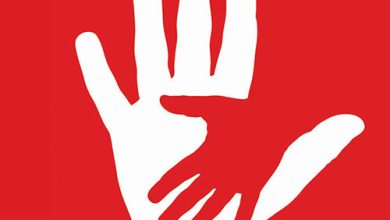LOCKDOWN MODE
COVID DIARIES
BY Priyan Rajapaksa
 ‘COVID-19’ and ‘pandemic’ have been the most used words in New Zealand for the past few months. New Zealand is lucky to have a leader who responded in a caring manner with a hard lockdown and range of support measures.
‘COVID-19’ and ‘pandemic’ have been the most used words in New Zealand for the past few months. New Zealand is lucky to have a leader who responded in a caring manner with a hard lockdown and range of support measures.
With China being its largest trading partner and the second largest source of inbound tourists, the risk to New Zealand’s economy was high. In late March, the government announced a response plan with a four level alert system.
Level 1 (Prepare) warned the public to reduce exposure through physical distancing, washing hands, coughing into elbows and avoid touching the face.
At Level 2 (Reduce), there’s increased border control, restrictions on mass gatherings, greater physical distancing on public transport, limited nonessential travel around the country, employers beginning to implement remote working, businesses activating continuity plans, and vulnerable people and those over 70 staying at home.
Level 3 (Restrict) involves travel limitations, public venues and educational institutes being closed, mass gatherings banned and changes to the healthcare system – primary care consultations are no longer face-to-face, and elective surgery and procedures are deferred.
At Level 4 (Lockdown), people to stay home, nonessential businesses are closed, supplies are rationed, facilities could be requisitioned, travel is severely limited and healthcare services are reprioritised.
On 23 March, New Zealand moved to Level 3 and within two days, notice of the move to Level 4.
There were queues at supermarkets, and a run on flour, pasta, rice and meat – herd behaviour as New Zealand exports food.
An NZ$ 12.1 billion monetary package was announced. The median weekly wage is 1,016 dollars; so for affected employees, sole traders and the self-employed, a weekly support payment was provided alongside NZ$ 350 for part-timers with workers in self-isolation being eligible.
All rents were frozen for 60 days and there was no eviction of tenants for nonpayment. Discussions were held with banks to defer home loan mortgages for six months but with interest accruing on unpaid balances.
Depreciation allowances for commercial buildings were reinstated. Moreover, depreciation on assets costing less than NZ$ 5,000 would be 100 percent – similar to lump sum depreciation in Sri Lanka back in the 1970s. The threshold for provisional or advanced corporate tax was increased from NZ$ 2,500 to 5,000 dollars.
Unemployment benefits rose by NZ$ 25 a week to help the weakest. The winter heating allowance for older people was doubled. And interest on unpaid tax would not be charged until conditions change.
The Reserve Bank of New Zealand prevented dividend payments by the big four Australian banks to their parent entities – and it retained the funds in New Zealand.
Businesses with annual revenue between NZ$ 250,000 and 80 million dollars can apply for bank loans of up to NZ$ 500,000 – for up to three years. These loans are intended to provide for present and future operating cash flows.
Meanwhile, the government is guaranteeing 80 percent of the risk with banks risking 20 percent. Normal lending processes are to be followed by banks. Businesses in certain categories cannot apply.
The cost of borrowing was reduced by moving the official cash rate (OCR) to 0.25 percent and introducing quantitative easing (QE), buying government bonds (public debt) from banks and swapping them for cash so that the banks can on-lend (a.k.a. print money).
New Zealand’s Treasury estimates a GDP downturn of over 10 percent in the second quarter of this year. The Reserve Bank can maintain monetary support for as long as is needed through QE and other tools. New Zealand is in a globally enviable fiscal position with significant headroom. This will keep long-term interest rates low and help the government fund its activities.
The government opened up new exchange and lending facilities for banks should more liquidity be needed. Daily open market operations ensure that there’s sufficient cash in the money system.
Indeed, some businesses will fail, unemployment could rise and banks may have to judge if a firm is illiquid or insolvent when lending. The financial system is strong but New Zealand does not run a ‘zero failure’ regime.
Of nearly 400,000 jobs in tourism and hospitality, between 100,000 and 200,000 jobs may be lost. It’s not only the people working in hotels, or activity providers or coach drivers. When front line tourism businesses no longer purchase goods and services, the impact spreads to other activities.
New Zealand is home to 100,000 foreign students who contribute NZ$ 5.1 billion to the economy and is the fourth largest export earner. The impact of the coronavirus is unknown.
Thirty percent of SMEs do not expect to survive. Many firms anticipate cutting 20 percent of their staff to survive.
It’s fantastic to have a caring leader – in the words of Billy Ocean, “when the going gets tough, the tough get going.”





